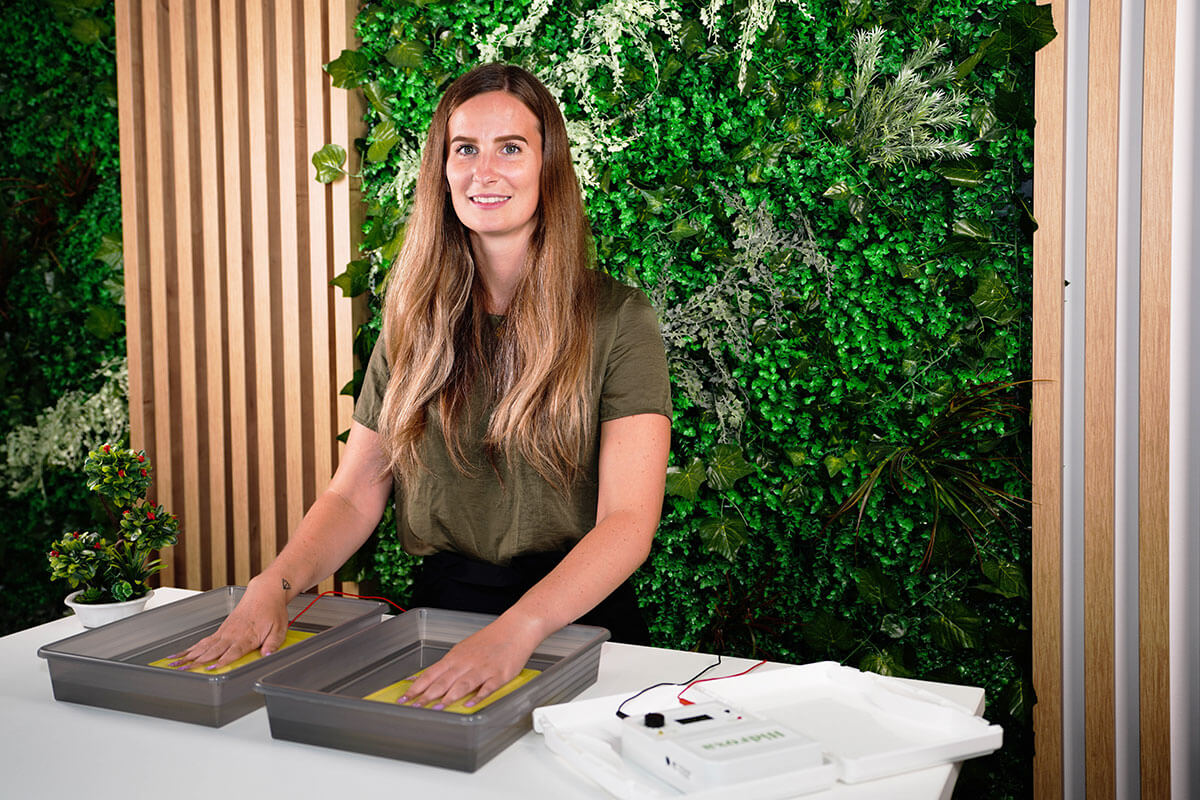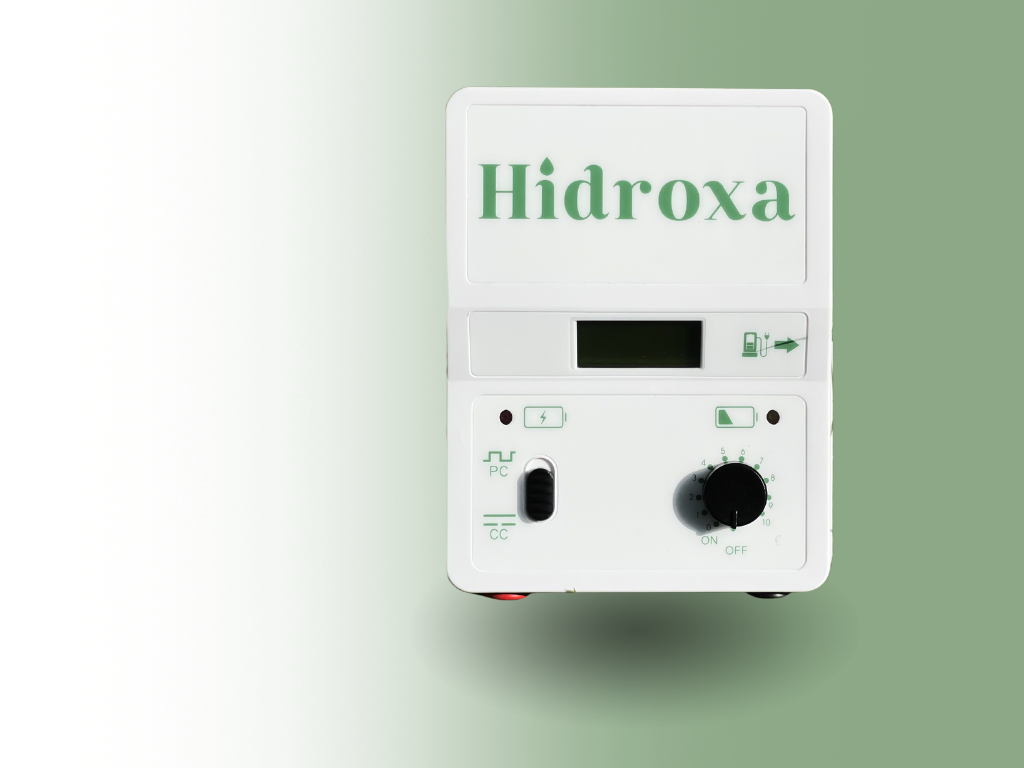Iontophoresis at home vs. clinical treatments: a comparative analysis
In recent years, iontophoresis has reemerged as an effective and non-invasive treatment for various dermatological conditions, most notably hyperhidrosis aka excessive sweating. Traditionally, iontophoresis sessions were only conducted in clinical settings due to their expensive price. However, with advancements in technology and growing awareness, the option of performing iontophoresis at home has gained popularity with more affordable devices. This article aims to provide a comparative analysis of iontophoresis at home versus clinical treatments, shedding light on the advantages and limitations of each approach.
Understanding Iontophoresis for Hyperhidrosis
Iontophoresis is a therapeutic technique that involves the administration of a low-intensity electrical current to the affected body part, typically hands, feet, or underarms submerged in water. The aim is to temporarily block the sweat glands and reduce excessive sweating. It's particularly effective for palmoplantar (hands and feet) and axillary (underarms) hyperhidrosis. The treatment's goal is not to cure, but to significantly manage and reduce excessive sweating over time with continuous maintenance treatments.
Iontophoresis at home
One of the primary advantages of iontophoresis at home is flexibility and convenience. Patients no longer need to navigate through busy schedules or bear the travel costs associated with regular clinic visits. Therefore by investing in iontophoresis machines designed for home use, you can tailor the treatment to fit your schedule. Additionally, iontophoresis devices designed for home use are often compact and portable, further adding to the convenience factor.
Another crucial aspect to consider when comparing iontophoresis at home and clinical treatments is cost-effectiveness. By opting for home treatments, individuals can save on consultation fees, transportation expenses, and lengthy waiting times, which are often encountered when seeking clinical treatment. The initial investment in purchasing an iontophoresis device is outweighed by the long-term savings and convenience it offers. Although clinical treatments may be covered by insurance, the overall cost can add up significantly, whereas home-based iontophoresis requires only a one-time investment. Additionally, in many countries health insurance might cover the purchase of an iontophoresis device for home use.
Not to mention the savings for the healthcare provider, saving time for the personnel and not having to offer rooms for treatment.
While iontophoresis at home appears to offer notable advantages, it is important to consider potential limitations. Clinical treatments, being administered by trained professionals, provide a more supervised and controlled environment. Healthcare providers have the experience of treating many patients and might suggest certain adjustment of settings for faster results. Trained personnel might also contribute to encouraging the patient to continue to be persistent until desired results are seen.
Moving forward, we will provide an in-depth analysis of iontophoresis treatments carried out at home, focusing on their effectiveness, user-friendliness, and cost implications. This will help paint a comprehensive picture of what you can expect from adopting this convenient method for managing hyperhidrosis, especially considering the potential challenges and differences compared to professionally administered clinical treatments.
Effectiveness: Home-based iontophoresis devices have been developed with user-friendly interfaces, making them effective for regular use. Although individual experiences may vary, approximately 90% of users observe a considerable decrease in sweating with regular use of the treatment.
Cost: The initial cost of purchasing a home iontophoresis device can be significant. However, over time, it becomes more cost-effective compared to the ongoing costs of clinical sessions.

Clinical iontophoresis treatments: expert care for hyperhidrosis
When it comes to tackling hyperhidrosis, clinical iontophoresis treatments provide a specialized and expert approach. These sessions, carried out under the watchful eye of healthcare professionals, offer a structured and tailored way to manage excessive sweating, especially beneficial for those needing a higher level of care.
At the heart of clinical iontophoresis is the expert guidance from medical staff. They’re skilled at fine-tuning the treatment for each person, making it a good fit for those with more severe cases of hyperhidrosis or for whom home treatment hasn’t worked as well. Should any questions arise, they are there to help. This can mean more accurate and potentially quicker results.
Despite the draw of treating hyperhidrosis at home, the routine and reliability of clinical visits can provide a sense of security for many. Regular appointments ensure you stick to the treatment plan, which is crucial for the best results. Plus, direct contact with healthcare providers allows for immediate answers to any questions or concerns.
However, it's worth noting the practical side of these treatments, like fitting appointments into a busy schedule and the ongoing costs, though insurance might cover some of these expenses.
In summary, clinical iontophoresis treatments bring a professional and precise approach to managing excessive sweating, serving as an effective choice for those who prefer a more guided and expert-led treatment experience. Next, we'll take a closer look at the specifics of these treatments, discussing their effectiveness, ease of use, and costs.
- Effectiveness: Clinical treatments are administered by healthcare professionals, ensuring optimal setup and application. This can be particularly beneficial for those with severe hyperhidrosis or when home treatment isn't effective.
- Convenience: The primary downside of clinical treatments is the need for regular visits to a healthcare provider, which can be time-consuming and less flexible.
- Cost: Clinical iontophoresis sessions typically incur recurring costs per visit. For long-term treatment, this can add up, making it less cost-effective than home-based treatments, though insurance may cover some expenses. Also the cost for the clinic is high in the use of room and personell.
Comparative analysis
- Effectiveness: Both home and clinical iontophoresis offer effective management of hyperhidrosis. Home devices provide good results for many, while clinical treatments may provide extra support and in some cases faster results due to correct settings right from the start.
- Convenience: Home-based iontophoresis scores higher in terms of convenience and flexibility, eliminating the need for regular clinic visits.
- Cost: In the long run, iontophoresis performed at home is generally more cost-effective, despite the initial investment in purchasing the device.
Anti sweat machine
Our Hidroxa SE 20 iontophoresis machine is easy to use and clinically tested for treating excessive sweating of palms, feet, face, and armpits.
Iontophoresis is a scientifically proven method that works for approximately 95% of our customers. You can reach its full effect with 12 treatments.

Questions about iontophoresis
Fortunately, you do not need a prescription to use iontophoresis machines at home (Exception is the US where prescription is needed). This means you can take charge of your treatment without the need for constant doctor visits or trips to the pharmacy. However, it's always a good idea to consult with a healthcare professional or dermatologist to ensure iontophoresis is a suitable option for you.
When it comes to iontophoresis, it is crucial to follow the recommended guidelines. While the frequency of treatments can vary it's generally advised to start with everyday to every other day. As you progress, you can gradually reduce the frequency to maintain the desired results. The current level needed for iontophoresis usually ranges from 5-30 mA but the advice is to simply go for the highest comfortable (non painful) level.
Though iontophoresis has been successful for many individuals, it's crucial to be aware of the potential drawbacks. Some common cons include the time commitment required for treatments, the possibility of skin irritation, and the need for ongoing maintenance. Additionally, it may take multiple sessions before noticeable improvements occur.
If you're wondering whether hyperhidrosis will ever come to an end, keep in mind that everyone's journey with this condition is unique. While for some individuals, hyperhidrosis may lessen or cease over time, for others, it can be a lifelong concern. Seeking appropriate treatment and management options, such as iontophoresis, can significantly improve the quality of life for those affected.
While iontophoresis is generally considered safe and effective, certain individuals should abstain from using this treatment method. Those who have pacemakers or other electronic medical devices should avoid iontophoresis due to the electric current involved. Additionally, individuals with open wounds or lesions on the treatment area should refrain from undergoing this therapy until the skin has healed.
Summary
In conclusion, the choice between iontophoresis at home and clinical treatments depends on individual circumstances and preferences. Home-based iontophoresis offers flexibility, convenience, and cost-effectiveness, making it an attractive option for patients seeking long-term relief from hyperhidrosis. However, clinical treatments continue to provide an invaluable level of expertise and supervision, particularly for individuals with complex medical conditions. It is vital for patients to consult healthcare professionals before embarking on any treatment approach to ensure they make informed decisions based on their specific needs.
Performing one or two treatments in the clinic, getting the right settings and answer to your questions and then continuing treatments at home is usually the best option.